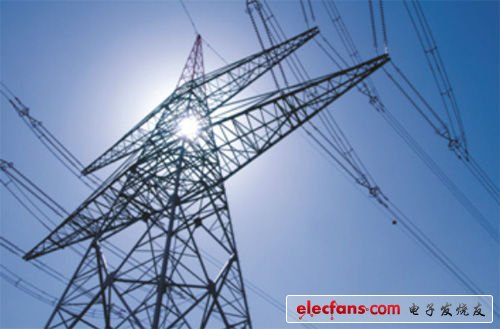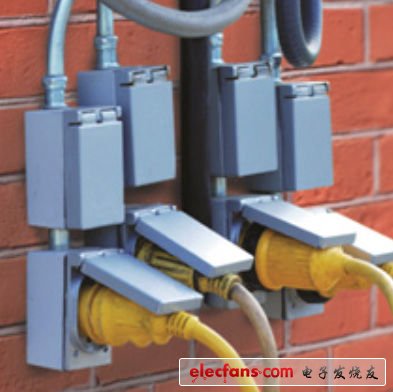Grid metering and security solutions escort smart grids
introduction
With the increasing popularity of smart grid deployments around the world, consumers, design engineers, and power companies are all discussing how smart grids will transform the entire energy industry. The smart grid allows the power company to access meter data without having to send someone to the site to read the meter, saving money. Power companies, power plants and consumers are now looking for more environmentally friendly alternative fuels. The new business model encourages peak demand reductions through incentives such as time-sharing to reduce energy consumption during peak periods. Distributed energy sources, such as electric vehicles and various forms of solar and wind energy, are maximizing support for peak demand through renewable resources and available resources. All these technological advances will also result in greater data analysis in the smart grid. With the smart grid, the power company has evolved from a monthly meter reading or several times to read 6 to 96 meter readings per day. All the data generated by smart meters provides an opportunity to better understand usage patterns, waste, and other factors that power companies have not yet understood.
But in the final analysis, smart meter and grid management alone cannot guarantee the success of the smart grid. To fully exploit this technological advantage, smart grid design must focus on energy metering and safety.

Energy metering saves energy
Unfortunately, today's big emphasis on the future management of smart grid technologies and their communication architectures (see attached below for more information) makes it easy to forget that energy metering and security are critical to the success of the system. After all, networks related to power management must not only measure their key commodities, but also protect the valuable infrastructure of transported goods. Enter energy metering.
Smart meters measure industrial and consumer energy consumption using a power company-level energy measurement function called "metering." These smart meters are already part of a large number of machine-to-machine power networks, including Italy, California and parts of Scandinavia. But isn't the power company passionate about energy consumption? of course not. The benefits of extensive energy metering can be extended to a large number of users and providers on the grid.
In my own case, the electricity bills in October, November and December last year soared. In the late December, my dryer broke down. Fortunately, my wife and I can buy a new one right away, which is too important in the deep winter season. In retrospect, the dryer was burnt out due to excessive power consumption, which explains the reason for the monthly high power consumption and the surge in electricity bills, resulting in economic losses and the re-purchase of the new dryer.

Energy metering helps solve situations like me. Energy metering for a variety of applications, such as consumer devices and industrial motors, has great benefits: reducing power consumption; identifying critical assets that require maintenance or even replacement; helping more experienced users or system operators make More informed decisions about energy consumption and system performance. In the case of my dryer, if the power consumption of the motor can be accurately measured, the power consumption of the device can be immediately increased. Just like the “engine check†indicator on a car, the energy meter records the usage pattern to indicate equipment condition and operating conditions before a fault occurs. The usage mode will give me enough time to repair the dryer or simply buy a new one (buy at a discount!).
In industrial equipment, the energy consumed (waste energy in the case of a faulty dryer) is small compared to the potential benefits of accurate energy metering. In the manufacturing industry, motors account for 54% of power consumption1, which is important for uptime requirements and production targets. For example, suppose a 100hp motor has a voltage imbalance of 2.5%, which is estimated to consume an additional $4762 per year. In addition, additional wear and tear on the equipment will result in more maintenance and early replacement costs. You will soon understand the benefits of energy metering in the smart grid for industry. Now, further logical reasoning. The increased power and maintenance costs of motors worldwide mean huge opportunities for energy savings and savings.
Once you recognize the importance of good management of energy measurement, you will seek to achieve a solution. At this point, smart meters and metering systems are the decisive factors. Maxim Integrated offers a wide range of energy metering and motor diagnostic solutions for energy condition monitoring. The 78M6610, 78M6613, 78M6631, and MAX78638 provide high-precision, four-quadrant measurements with user firmware. These devices monitor and measure solar panel conversion efficiency, motor operation for industrial applications, and provide valuable measurement data for energy consumption in lighting and computing applications. Finally, the investment in energy metering schemes is much smaller than the savings in preventing equipment failures and ensuring proper system operation.
Grid security - critical, but not yet getting the attention it deserves
The smart grid also requires 24/7 to be completely secure. Most users, even industrial and power companies, underestimate the importance of this. Endpoints, such as smart meters, industrial motors, user equipment, and widely distributed automation devices consume and control power. At the same time, applications for grid-connected devices continue to increase as smart grid operators make full use of “smart†networks to correct power factor, optimize voltage, accurately locate faults, and reduce repair time to ensure uptime.
Cyber ​​attacks, IP theft, and disruption of productivity - all of these threats are on the rise in smart grids and industrial control systems. Only complete security measures optimized for the smart grid can prevent these serious threats and ensure maximum uptime, whether it is a simple household clothes dryer or an advanced distributed industrial center. Unfortunately, in many cases, the severity of security risks is not fully realized and there are only minimal security measures. In a conversation with a power company expert, he told me that "barbed wire, padlocks and high voltage are the only protective measures" in the power company's substation. Other short-sighted operators believe in the inherent security measures of hardware without recognizing the more serious threats caused by cyber attacks through software.
The most effective security solution ensures the security of the product's entire lifecycle through hardware and software. Grid security has far-reaching implications due to potential security breaches from equipment purchase to manufacturing, from operation to decommissioning.
When purchasing products that will work on the smart grid, buyers must ensure reliable access to silicon and other critical computing devices. This is critical to avoiding counterfeit products. In the manufacturing process, powerful security authentication technology prevents third parties (such as manufacturing contractors) from stealing keys and then using them to steal electricity or use viruses to infect the grid. When used in the field, the key is stored securely and the data of the communication channel is encrypted in multiple layers. The secure boot loader prevents viruses and malware from being loaded into the system. Hardware technology monitors physical security and responds to tampering events. Devices and sensors that are not under constant and explicit monitoring require such comprehensive safety protection.
Design the most effective security measures and integrate them into the system or the grid itself. Maxim offers a complete line of security products, such as the MAXQ1050, MAX36025, and MAX71637, to meet the security needs of smart grids. These devices integrate basic multi-layer security authentication methods, including split keys, asymmetric encryption, secure boot loaders, and various physical tamper protection methods.
to sum up
It sounds like a cliché, but it is a true fact: smart grids have the potential to completely change the energy industry. This is both exciting and worthy of our attention. However, when in this management euphoria, it is easy to overlook important issues that are often hidden by grid metering and security. It is this environment that proves that the design of high-quality electricity meters is the most valuable. If we continue to focus on energy metering and safety, and really use this technology, then we must pay attention to the way smart meters implement smart grids.
Attachment: Comparison between Smart Grid and Telecom--Double Net
When we talk about smart grids, we often value their potential as a self-healing grid that reduces energy consumption and changes our energy infrastructure. How is such revolutionary technology designed and produced? What is its driving force?
A well-structured, technologically mature telecommunications infrastructure network is the foundation of today's smart grid. When discussing this topic, there is often talk about the Internet and big data, which provide the ability to aggregate and analyze vast amounts of information and use that information to make useful decisions.

It is true that both telecommunications networks and smart grids have the same core, high speed and interoperable communication layer. However, there are very important and fundamental differences between the two: the smart grid is really a machine-to-machine network. Traditional telecom endpoints generate human-machine interactions, including phones, computers, and now smartphones. The endpoint of the machine-to-machine network consists of a sensor, a functional machine, or both. These machines are usually not directly controlled by humans, so they cannot effectively express or report the status or health of the network. For example, industrial sensors are often located in inaccessible locations, away from the central system, cannot be upgraded, and are not under manual supervision. Because there is no human intervention between the system and the remote device, the smart grid system designer must consider the detection function and security of the distributed network in depth.
Copper Led Lights Features:
High brightness, low power consumption
Outdoor and indoor decoration light
Made of high quality material, durable for daily use
Very low heat generating, besides saving light power
Energy-saving and environmentally friendly.
Long lifespan: more than 100000 hours.
Safe and environment-friendly, no radiation or pollution elements.
Light up your holiday party with the flashing string lights
Bright fairy lights to decorate your Christmas, wedding, party, festival, etc.
The lamp should be kept away from dampness, rain or mist
Copper Led Lights,Copper Wire Lights,Copper Led Lights,Copper Wire Led Lights
XINGYONG XMAS OPTICAL (DONGGUAN ) CO., LTD , https://www.xingyongled.com